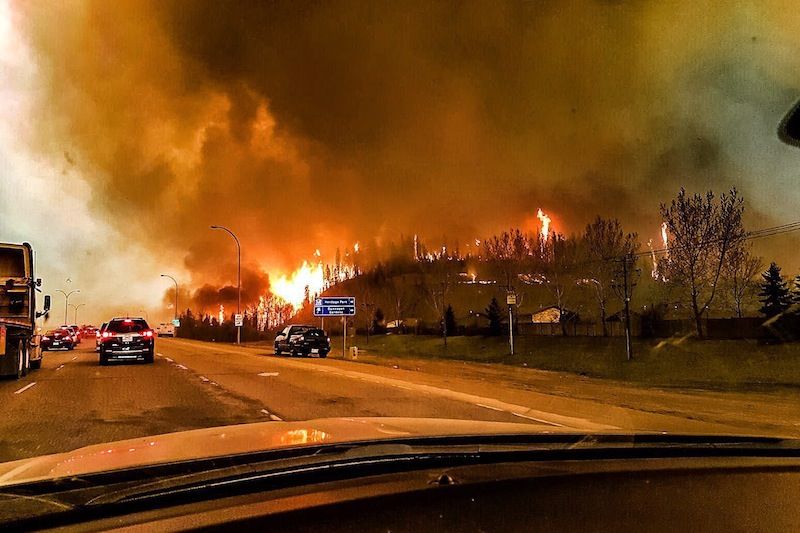Brief Chronology:
- The fire starting on 1 May 2016 due to human activity.
- Grew to 2,656 ha by 2 May, resulting in partial evacuations.
- By 3 May the whole town was evacuated. Fire approaches and then jumps Hwy 63 (see photo), impeding evacuation. Two die in car crash.
- On 4 May, Alberta declares provincial state of emergency. Fire grows to 85,000 ha.
- On 10 May two of the main fires merge, to create a blaze of 229,000 ha.
- On 16 May all oil-sands workers evaculate the camps north of town.
- Residents allowed to return on 1 June 2016.
- On 2 Aug 2017, the fire was finally extinguished.
|
 |
Fire Facts:
- Fire ID: MWF-009.
- Official Name: "Horse River Wildfire"
- Total burned area: 589,552 ha
- Destroyed 2,400 homes and businesses
- Required over 2000 fire fighters
- Over 2000 personnel fighting this fire, including 200 from USA, 60 from Mexico, and 298 from South Africa.
- 88,000 people were evaculated.
- Total cost: $4,068,678,000. plus $3,600,000,000 insurance payments
|
 |

